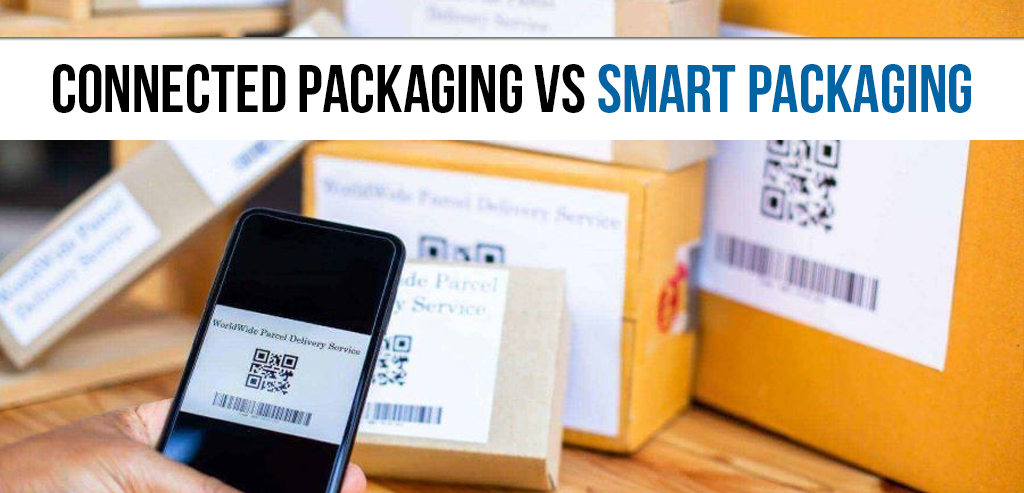Brands are leveraging the power of packaging. It’s more than attention-grabbing colors and a recognizable brand logo where businesses create a unique brand experience and add value to their product. With time, various added capabilities of new and emerging technologies are coming into the packaging industry.
The terms like smart, connected, active, or intelligent packaging are used interchangeably. It is difficult to articulate the differences between them. In fact, in many consumer products, the words “smart” and “connected” are used interchangeably. However, these terms are distinct in the packaging industry.
Know the difference between connected and smart
The word “smart” indicates some kind of intelligent behavior that allows devices to proactively react to real-world situations or interact with users. While “connected” refers to the ability to collect, share, process, and utilize data through Wi-Fi, Bluetooth, 5G, QR codes, or NFC tags. By gathering and transmitting data to the cloud, brands can drive a high level of engagement with their customers.
The preference is more for connected packaging
Connectivity packaging makes more sense to brands these days. It allows them to communicate with customers in an effective way without incurring high expenses. It’s activated by technologies such as QR Codes, NFC, and RFID that offer great insights into customer data.
Whether the purpose is to establish product and supply chain transparency, share a brand story, or increase customer engagement, connected packaging acts as a bridge between brands and customers to create lifelong relationships.
Benefits of using connected packaging
Brands want to improve the customer experience, elevate brand loyalty, increase customer lifetime value, and add value to their offerings. Connected packaging helps them do that. It helps to create a direct relationship between brands and consumers. By becoming a data source, connected packaging becomes a convenient tool or point of interaction.
The advanced digital technology tells brands what people are ordering, when they are ordering more (or less), usage habits, and other vital consumer information. Brands will be able to know what is valuable to their customers, allowing them to improve their offerings over time. All thanks to the data collection. The information contained in the product package will be targeted to every customer. Every customer will have a connected experience with the product they bought.
Some use cases of connected packaging
Connected content is more accurate and resourceful. Therefore, the results connected packaging that offers a more customized and personalized experience to customers. Here are some of its use cases:
- Tell your brand story
To stand out in the competition, brands must reflect their USPs and actively engage with the audience. Brand storytelling proves to be the key differentiator for businesses.
With connected packaging, you can share your brand’s story with customers. Insert QR Codes and NFC on product packaging to link to your engaging video or webpage to communicate your brand story.
- Promote brand loyalty programs
Positive customer experience drives brand success. Digital loyalty programs enable brands to make close relationships with customers. Connected packaging using QR Codes and NFC transforms loyalty programs.
With a single scan, customers can become a member of a loyalty program instantly.
- Collect customer feedback
Genuine customer feedback matters. Connected packaging can help brands collect feedback. How? By adding QR Codes and NFC to product packaging that redirect consumers to online, mobile-first feedback forms.
Consumers can take surveys anytime at their convenience from their mobile phones. It drastically reduces their effort leading to a higher level of satisfaction.
LetsVeriFy’s technologically advanced connected packaging offers brands the opportunity to create and share unique digital content with customers. Connect with us today.

